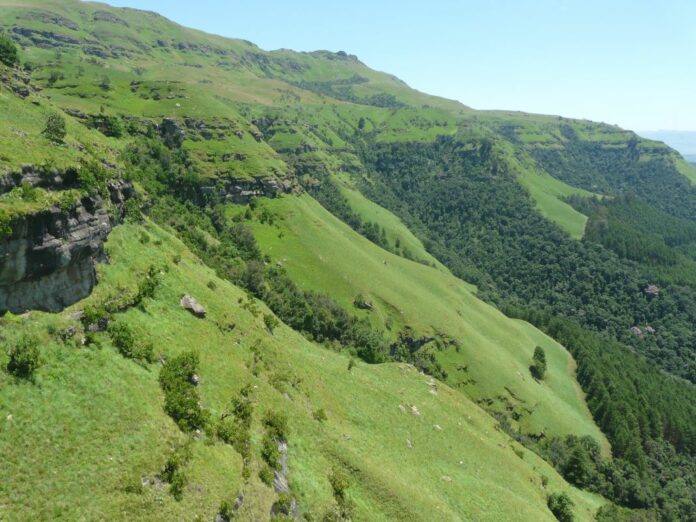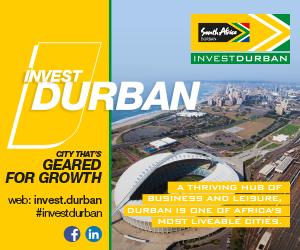South African consumers’ views on environmental perceptions, preferences and attitudes towards print, paper and paper-based packaging have been included for the first time in an international survey, which showed that many are still confused about the relationship between farmed wood for papermaking and deforestation.
The responses of 10 000 people in 16 countries were documented by Two Sides in the biennial Trend Tracker Survey. While 71% of South African consumers agree that it is important to use paper products from sustainably managed forests, and 36% pay attention to forestry certification labels when purchasing paper-based products, the perceptions that a paperless environment is ecologically friendly and that forestry as an industry contributes to deforestation, persists.
The survey showed that 35% of consumers believed that electronic devices were the most environmentally friendly, yet wood ranked second and paper ranked fourth. On the one hand, 77% of people feel that electronic communication is better than paper-based media. Then again, 76% acknowledge that planted forests are not bad for the environment, a clear contradiction.
According to the World Wildlife Fund, agriculture is the leading cause of deforestation, which occurs primarily in tropical and subtropical regions of the world and is linked to meat, soya beans and palm oil. Jane Molony, executive director of the Paper Manufacturers Association of South Africa (PAMSA), says the forest and paper sector is misunderstood and thus beleaguered by myths that are rooted in ignorance and assumption.
“Timber plantations or planted forests make up 7% of the global forest area, yet provide about 50% of the wood for industrial use such as pulp, paper and timber for construction,” she says. For this reason, balancing sustainability with productive and economic imperatives is high on the forestry sector’s agenda. “Through biodiversity enrichment, water stewardship and community support programmes, the forestry sector invests significantly in reducing its impact on the land it uses,” says Molony.
In May 2023, PAMSA member Mondi South Africa and Endangered Wildlife Trust announced a three-year partnership to map Mondi South Africa’s species and ecosystem biodiversity footprint and identify best practices for biodiversity management in its local forestry operations.

Sustainable forestry misunderstood
Paper’s core component, cellulose, is a renewable resource. In South Africa, where almost all indigenous forests and woodlands are protected, wood for pulp and paper product comes from sustainably managed forests where the cycle of planting, growing and regenerating is carefully controlled. The needs of the timber, pulp and paper sectors are served by 1.4-billion trees planted on 1.2-million hectares, which is 1% of South Africa’s total land cover.
“Forestry companies have nurseries tending to millions of seedlings every year which go on to replace mature trees once they have been harvested,” explains Molony. Less than 10% of the total plantation area is harvested annually and this is replanted within the same year, which means that more than 111-million trees are planted every year. “That is, on average, 306 000 trees a day.”
The needs of the timber, pulp and paper sectors are served by 1.4-billion trees planted on 1.2-million hectares, which is 1% of South Africa’s total land cover.
South Africa is naturally a very tree-poor country, with only 0.4% of the country being covered with indigenous trees. This is one of the key reasons why only commercially planted trees are used for wood products, to prevent encroaching on our indigenous forests.
In addition, at least one quarter of forestry-owned land is left unplanted, allowing biodiversity-rich corridors to flourish with indigenous fauna and flora in grasslands, wetlands and wooded areas. Sappi, also a PAMSA member, has seven declared nature reserves on its landholdings in Mpumalanga and KwaZulu-Natal provinces with a combined 6 320 hectares including Clairmont Mountain Nature Reserve which is home to 10 red-data species. These reserves are part of South Africa’s Biodiversity Stewardship Programme managed by the South African National Biodiversity Institute (SANBI).

What about water?
Water use was another area where misconceptions seem to have taken hold. Just more than half of consumers surveyed (51%) believe that paper production uses an excessive amount of water, but the forestry sector uses only 3% of South Africa’s available water, with agriculture and domestic water consumption accounting for 60% and 29% respectively.
“Plantations are not irrigated. Some companies plant seedlings with hydrogel, but the rest is up to nature,” says Molony. “Yet our sector is the only sector to pay a ‘rain tax’, as forestry is considered a stream-flow-reduction activity.” Trees, like any living organism, take in, use and transpire water as part of their growth needs. “This is why the forestry industry is adopting a more stringent approach to planting, ensuring buffer zones exist between compartments and riverine areas,” notes Molony.
The WWF-Mondi Water Stewardship has been in place for more than three decades, initially centred on wetland management but later expanded to focus on catchment-based water stewardship which prioritises catchments with possible water-related risks. Mondi has made investments in rehabilitating wetlands on plantation landholdings in Mpumalanga, the Eastern Cape and KwaZulu-Natal. Currently Mondi manages about 15 000 hectares of wetlands within its own and leased land properties.

Sappi is also working closely with WWF to improve the catchment and the ecological integrity of the uMkomaas River which is strategic for Sappi in terms of water supply to operations. Work includes clearing of invasive alien plants in the catchment area by using members of the local community who are employed in the project, which contributes to employment in the rural areas of Impendle.
“We have to continue to challenge the misconceptions and contradictory opinions surrounding wood and paper-based products and their impact on the environment,” concludes Molony. “When people grasp that trees are farmed, just like we farm mealies and wheat, their perception shifts. I’ve witnessed this personally time and time again.”








